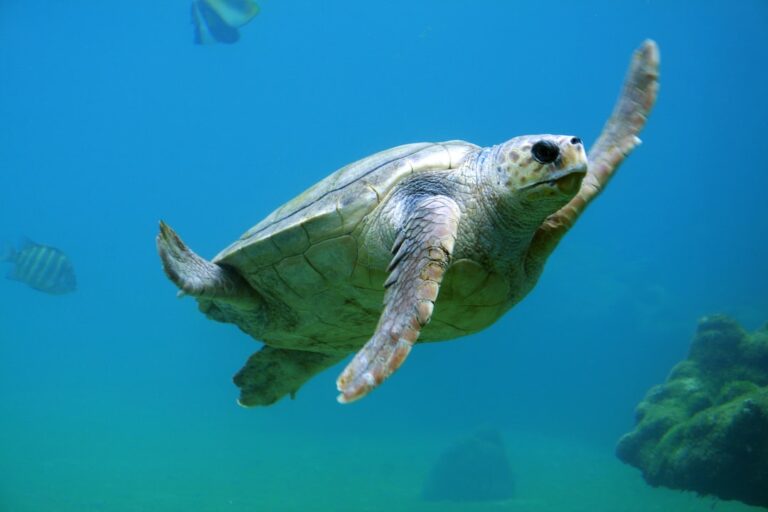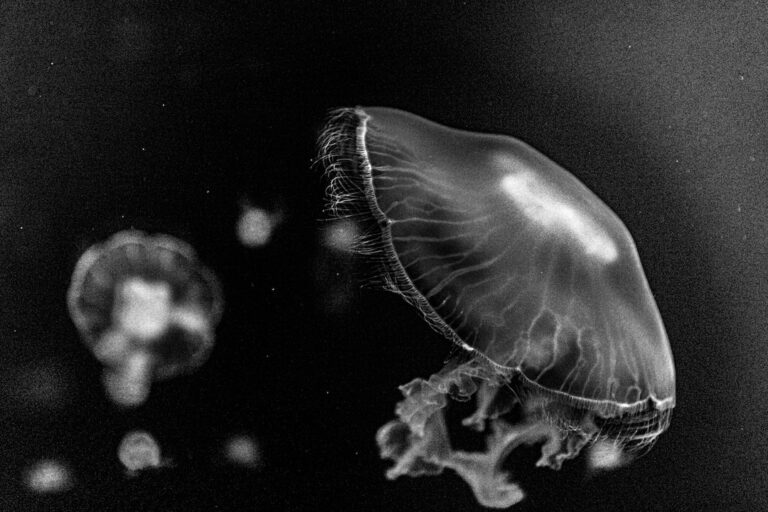Why Do Turtles Abandon Their Young?
Turtle abandonment refers to the act of a female turtle leaving her nest before the eggs have hatched. This phenomenon is of great importance to scientists and conservationists as it can have significant implications for the survival and reproductive success of turtle populations. In this article, we will explore the natural and human-induced factors that contribute to turtle nest abandonment, the impact of climate change on nesting behavior, predation pressure, competition for nesting sites, disease and parasites, and the role of nest abandonment in turtle reproductive strategies. By understanding these factors, we can develop effective conservation strategies to protect turtle nesting sites and hatchlings.
Table of Contents
Natural Causes of Turtle Nest Abandonment
Nest site selection plays a crucial role in determining whether a female turtle will abandon her nest or not. Turtles are highly selective when it comes to choosing a suitable nesting site. Factors such as sand temperature, moisture levels, and proximity to water are all taken into consideration. If a female turtle does not find a suitable nesting site, she may abandon her eggs and search for an alternative location.
Nesting density can also influence turtle nest abandonment. When nesting sites are overcrowded, females may abandon their nests due to increased competition for resources and increased predation risk. High nesting densities can also lead to increased nest predation rates, which can further contribute to nest abandonment.
Temperature and humidity are crucial factors for successful incubation of turtle eggs. If the temperature or humidity levels are not within the optimal range, it can lead to developmental abnormalities or death of the embryos. In such cases, females may abandon their nests in search of more suitable conditions.
Natural disasters such as storms, hurricanes, or flooding can also cause turtles to abandon their nests. These events can destroy or flood nesting sites, making them unsuitable for incubation. In response to these natural disasters, turtles may abandon their nests and attempt to find safer locations.
Human-Induced Factors Contributing to Turtle Nest Desertion
Habitat destruction is one of the major human-induced factors contributing to turtle nest abandonment. Coastal development, including the construction of buildings, roads, and beachfront properties, can destroy or disrupt nesting sites. As a result, female turtles may abandon their nests and fail to reproduce successfully.
Pollution, particularly marine pollution, can also have detrimental effects on turtle nesting behavior. Chemical pollutants such as oil spills or toxic waste can contaminate nesting sites and make them unsuitable for incubation. Additionally, plastic pollution can pose a threat to nesting turtles as they may mistake plastic debris for food or become entangled in it.
Light pollution is another human-induced factor that can contribute to turtle nest abandonment. Artificial lighting on beaches can disorient hatchlings and prevent them from finding their way to the ocean. This can lead to increased predation and mortality rates for hatchlings. Female turtles may also be deterred from nesting on beaches with excessive artificial lighting.
Beach activities such as recreational boating, beach driving, and beachfront construction can disturb nesting turtles and cause them to abandon their nests. The noise and disturbance caused by these activities can disrupt the nesting process and lead to nest abandonment.
Climate Change and its Impact on Turtle Nesting Behavior
Climate change is a significant threat to turtle populations worldwide, and it has the potential to impact nesting behavior and contribute to nest abandonment. Rising sea levels pose a threat to nesting beaches as they can erode or flood nesting sites. This can force female turtles to abandon their nests and seek alternative locations.
Temperature changes associated with climate change can also affect turtle nesting behavior. Warmer temperatures can lead to higher nest temperatures, which can result in developmental abnormalities or death of the embryos. In response to these unfavorable conditions, females may abandon their nests in search of cooler locations.
Changes in precipitation patterns can also impact turtle nesting behavior. Increased rainfall can flood nesting sites, making them unsuitable for incubation. Conversely, decreased rainfall can lead to dry and arid conditions, which can also be detrimental to the survival of turtle eggs. In both cases, females may abandon their nests and search for more suitable conditions.
Predation Pressure and Turtle Nest Abandonment
Predation is a natural threat to turtle nests, and it can contribute to nest abandonment. Natural predators such as raccoons, foxes, and birds can locate and consume turtle eggs, leading to nest failure. In response to increased predation pressure, female turtles may abandon their nests and attempt to find safer locations.
Human-induced predation is also a significant threat to turtle nests. Poaching of eggs for consumption or illegal trade can result in the destruction of entire nests. Additionally, domestic animals such as dogs can disturb or destroy turtle nests. These human-induced predation pressures can cause female turtles to abandon their nests and reduce reproductive success.
To reduce predation pressure on turtle nests, conservation efforts often focus on nest protection strategies. These may include the use of predator exclusion devices such as wire mesh cages or the relocation of nests to safer locations. By implementing these strategies, the survival rate of turtle nests can be increased, reducing the need for females to abandon their nests.
Competition for Nesting Sites and its Effect on Turtle Reproduction
Competition for nesting sites can have significant implications for turtle reproduction and contribute to nest abandonment. Intraspecific competition occurs when multiple females attempt to nest in the same area. This competition can lead to increased aggression and disturbance, causing some females to abandon their nests.
Interspecific competition occurs when different species of turtles compete for the same nesting sites. This competition can result in displacement of certain species or reduced reproductive success for both species. In response to interspecific competition, female turtles may abandon their nests and search for alternative locations.
The implications of competition for nesting sites are particularly important for conservation efforts. As human activities continue to encroach on turtle habitats, competition for nesting sites is likely to increase. By understanding the factors that contribute to competition and nest abandonment, conservationists can develop strategies to mitigate these threats and protect turtle populations.
Disease and Parasites: A Hidden Threat to Turtle Hatchlings
Disease and parasites can pose a hidden threat to turtle hatchlings and contribute to nest abandonment. Common diseases and parasites that affect turtles include fibropapillomatosis, shell rot, and blood parasites. These diseases can weaken hatchlings and reduce their chances of survival.
The impact of diseases and parasites on hatchling survival can be significant. Infected hatchlings may have reduced immune function, making them more susceptible to predation or other environmental stressors. In severe cases, disease outbreaks can result in high mortality rates and the abandonment of entire nests.
Prevention and treatment of diseases and parasites are crucial for the conservation of turtle populations. This may involve regular health monitoring of nesting females and hatchlings, as well as the implementation of hygiene protocols to reduce the spread of diseases. By addressing these hidden threats, conservation efforts can improve the survival rates of turtle hatchlings and reduce the need for nest abandonment.
Reproductive Strategies of Turtles and the Role of Nest Abandonment
Turtles employ various reproductive strategies to ensure the survival of their offspring, and nest abandonment plays a crucial role in these strategies. Different species of turtles exhibit different nesting behaviors, including the selection of nesting sites, timing of nesting, and frequency of nesting.
For example, some species of turtles exhibit synchronous nesting behavior, where multiple females lay their eggs in the same area at the same time. This behavior can increase the chances of successful reproduction by overwhelming predators with a large number of nests. However, it can also lead to increased competition for nesting sites and increased predation pressure, which may result in nest abandonment.
Nest abandonment can also be a strategy to reduce the risk of predation. By leaving the nest before the eggs hatch, female turtles can minimize the chances of attracting predators to the nest site. This behavior is particularly common in species that lay their eggs in open areas or on beaches, where predation risk is high.
Understanding the reproductive strategies of turtles and the role of nest abandonment is essential for effective conservation and management. By studying these behaviors, scientists can develop strategies to protect nesting sites, reduce predation pressure, and improve the reproductive success of turtle populations.
Conservation Efforts to Protect Turtle Nesting Sites and Hatchlings
Conservation efforts to protect turtle nesting sites and hatchlings are crucial for the survival of turtle populations. Various strategies have been implemented to mitigate the threats faced by nesting turtles and increase their chances of successful reproduction.
Nest protection is one of the primary strategies used to safeguard turtle nests. This may involve the use of predator exclusion devices such as wire mesh cages or the relocation of nests to safer locations. By protecting nests from predation, conservationists can increase the survival rate of turtle eggs and reduce the need for females to abandon their nests.
Habitat restoration is another important conservation strategy. This involves restoring and protecting nesting beaches by removing invasive species, planting native vegetation, and reducing human disturbance. By creating suitable nesting habitats, conservationists can provide female turtles with more options for nesting sites and increase their chances of successful reproduction.
Public education plays a crucial role in turtle conservation efforts. By raising awareness about the threats faced by nesting turtles and the importance of protecting their habitats, conservationists can encourage individuals and communities to take action. Public education programs may include beach clean-ups, nest monitoring initiatives, and responsible beach activities.
The Importance of Understanding Turtle Nest Abandonment for Conservation and Research
In conclusion, turtle nest abandonment is a complex phenomenon influenced by a variety of natural and human-induced factors. Understanding these factors is crucial for the conservation and management of turtle populations. By studying nest site selection, nesting density, temperature and humidity, natural disasters, habitat destruction, pollution, light pollution, beach activities, climate change, predation pressure, competition for nesting sites, disease and parasites, reproductive strategies, and conservation efforts, scientists and conservationists can develop effective strategies to protect turtle nesting sites and hatchlings.
The implications of turtle nest abandonment are far-reaching. It can impact the survival and reproductive success of turtle populations, as well as the overall health of marine ecosystems. By implementing conservation efforts such as nest protection, habitat restoration, and public education programs, we can work towards ensuring the long-term survival of these magnificent creatures. It is essential for individuals and communities to recognize the importance of turtle conservation and take action to protect these vulnerable species. Together, we can make a difference and secure a future for turtles and their nesting sites.
If you’re interested in learning more about reptiles, you might also enjoy reading the article “Are Turtles Dumb?” on Reptile Friend. This article explores the common misconception that turtles are unintelligent creatures and provides fascinating insights into their cognitive abilities. Discover the truth behind this stereotype and gain a deeper understanding of these remarkable reptiles. Read more







